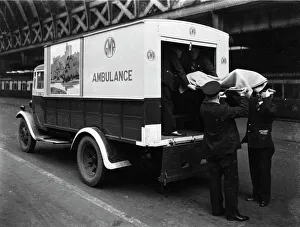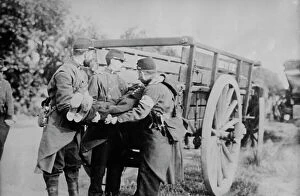Casualty Collection
"Casualty: A Glimpse into the Shadows of War" In the haunting silhouettes of World War I, we witness the grim reality of casualties
All Professionally Made to Order for Quick Shipping
"Casualty: A Glimpse into the Shadows of War" In the haunting silhouettes of World War I, we witness the grim reality of casualties. Wounded soldiers, their bodies bearing the scars of battle, lay scattered across the desolate landscape. Amidst this devastation, brave medical personnel tirelessly work to provide much-needed care and solace. Traveling back in time to 1864 at the Battle of Franklin in Tennessee, we encounter a lithograph capturing the intensity and sacrifice that unfolded on that fateful day. The image transports us to an era where valor clashed with tragedy as soldiers fought for their beliefs. A rubbing from an 18th-century New England gravestone serves as a poignant reminder of those lost during the Battle of Bennington in 1777. Each etched line tells a story untold but not forgotten – tales of bravery cut short by war's merciless hand. Fast forward to 1940, amidst another global conflict; railway staff convert a parcel van into an ambulance. This makeshift vehicle becomes a symbol of hope as it carries wounded soldiers away from danger towards life-saving treatment. The Battle at Porte St Denis in Paris takes us even further back in time to July 1830. Artist Hippolyte Lecomte captures both triumph and despair within his brushstrokes - casualties strewn across cobblestone streets while others valiantly fight for freedom. Memorial Day, 1868 brings mourners together as they decorate General Frederick W. Lander's grave in Salem. Their actions honor not only one man but also all those who made the ultimate sacrifice for their country - forever etching their names into history's annals. From there, our journey leads us to Mexborough in South Yorkshire during a first aid competition held in 1961. Here we witness ordinary citizens honing life-saving skills - proof that even amidst peace times, preparedness for casualties remains paramount.
















































